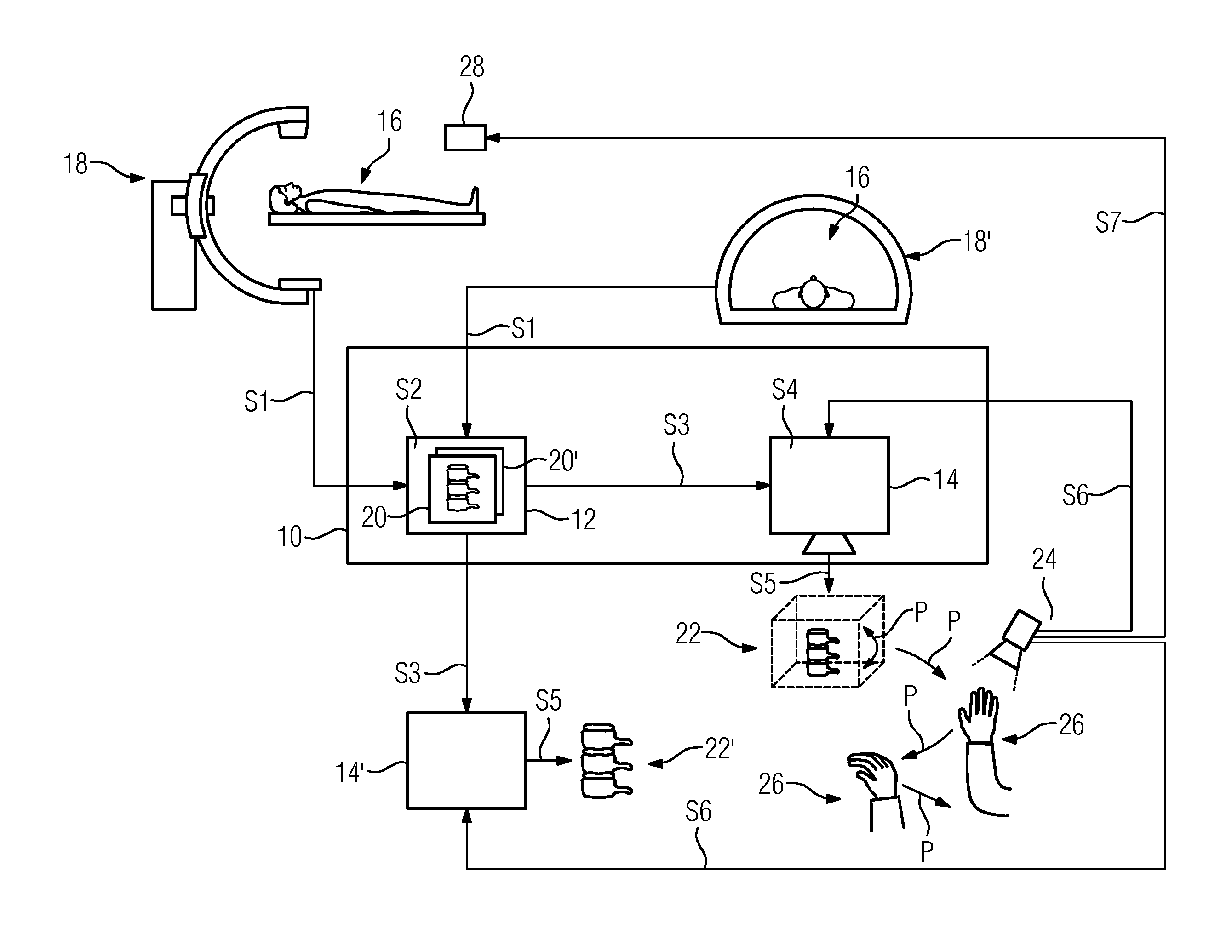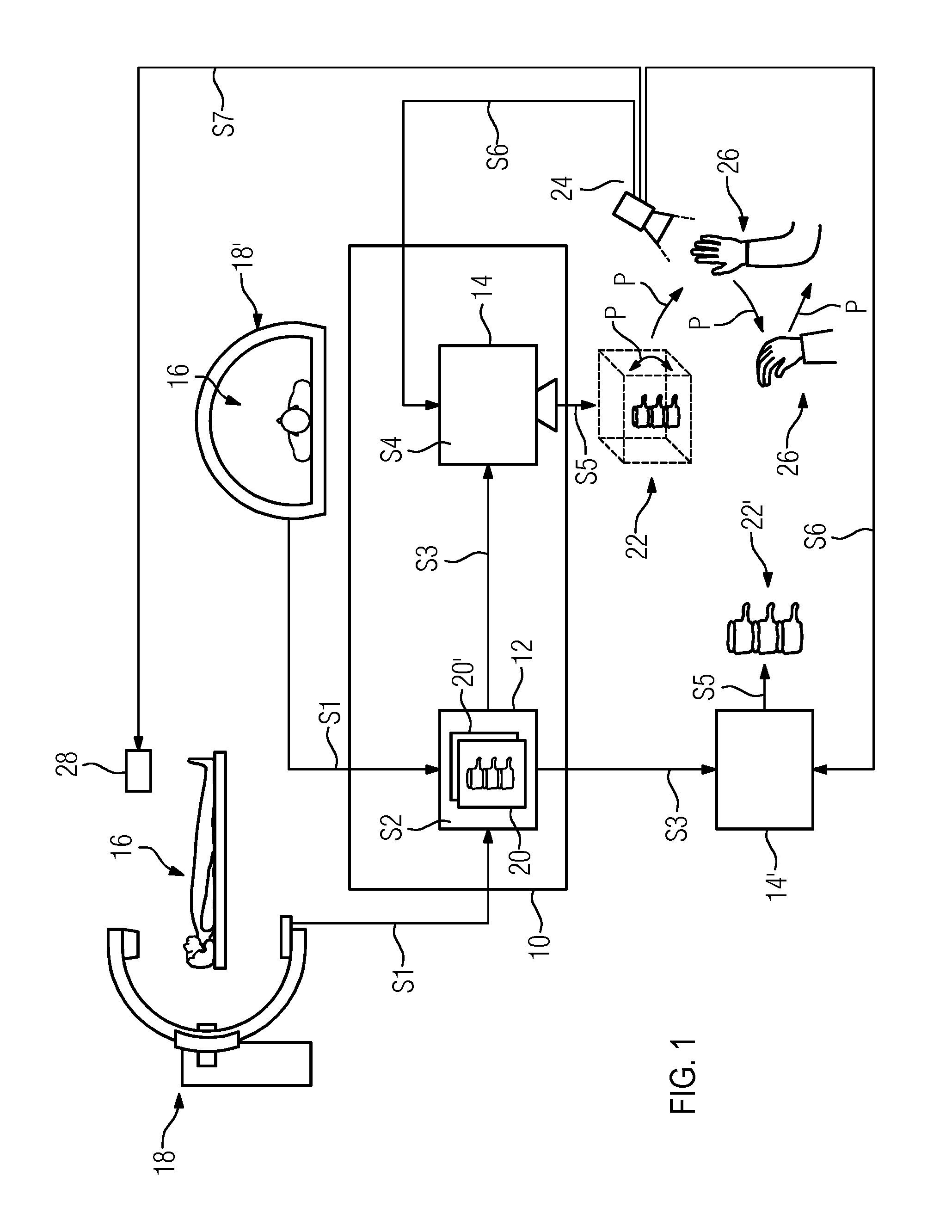Providing a Spatial Anatomical Model of a Body Part of a Patient
- Summary
- Abstract
- Description
- Claims
- Application Information
AI Technical Summary
Benefits of technology
Problems solved by technology
Method used
Image
Examples
Embodiment Construction
[0027]FIG. 1 shows a telemedical system 10 including a control device 12 and an output device 14. In this arrangement, the control device 12 includes, for example, a microchip or a control unit.
[0028]The output device 14 is embodied, for example, as a display composed of a polymer material, as an apparatus for representing a hologram on a holographic film by a laser, or as an apparatus enabling the generative manufacture of a workpiece. In one embodiment, the output device 14 includes an apparatus enabling the generative manufacture of a workpiece, such as, for example, a 3D printer for laser melting, electron beam melting, selective laser sintering, stereolithography or for “digital light processing”, polyjet modeling or “fused deposition modeling”. Further exemplary apparatuses for the generative manufacture of a workpiece include, for example, an apparatus for rapid prototyping, rapid tooling or rapid manufacturing.
[0029]In the telemedical system 10, the control device 12 and the...
PUM
 Login to View More
Login to View More Abstract
Description
Claims
Application Information
 Login to View More
Login to View More - R&D
- Intellectual Property
- Life Sciences
- Materials
- Tech Scout
- Unparalleled Data Quality
- Higher Quality Content
- 60% Fewer Hallucinations
Browse by: Latest US Patents, China's latest patents, Technical Efficacy Thesaurus, Application Domain, Technology Topic, Popular Technical Reports.
© 2025 PatSnap. All rights reserved.Legal|Privacy policy|Modern Slavery Act Transparency Statement|Sitemap|About US| Contact US: help@patsnap.com


